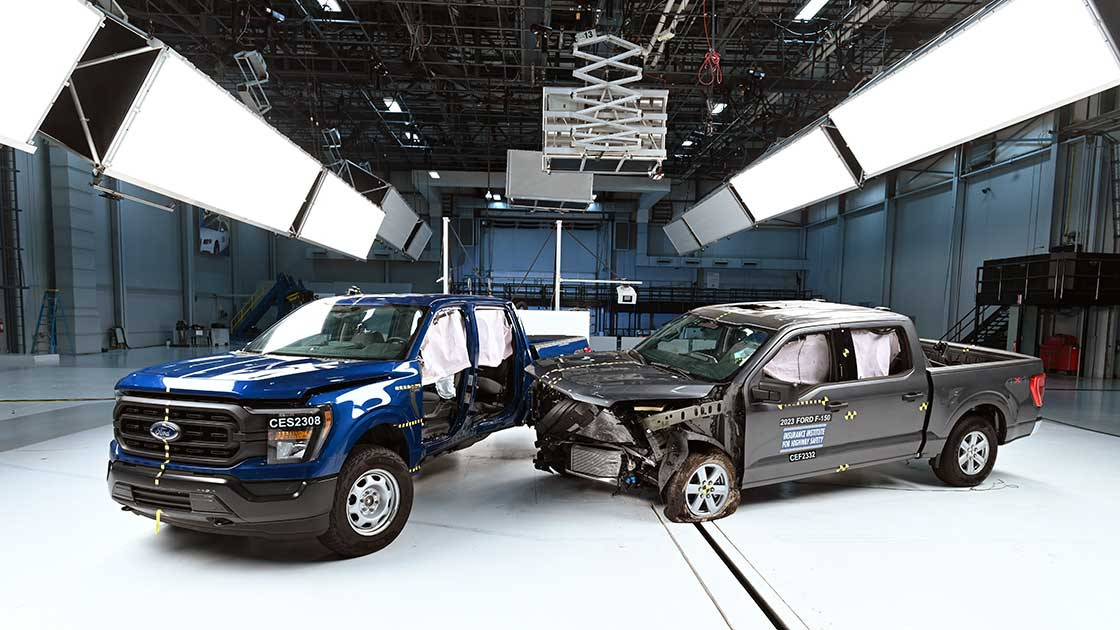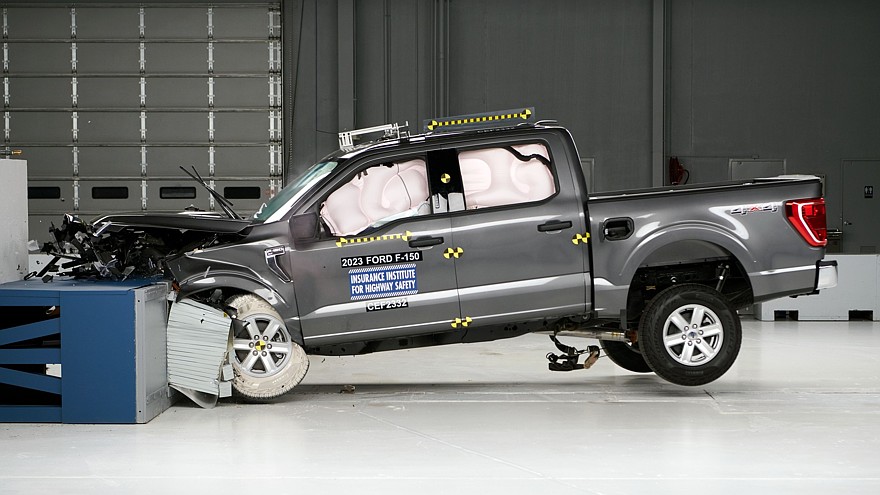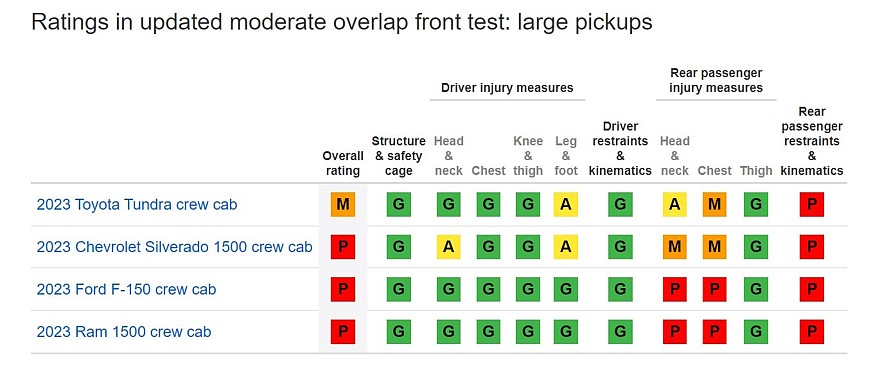
Chevrolet Silverado 1500, Ford F-150, Ram 1500 and Toyota Tundra with full-size double-row Crew Cabs failed to show decent results in the new IIHS frontal crash test, which focuses on rear-seat occupant safety.
The Insurance Institute for Highway Safety (IIHS) regularly improves its comprehensive safety testing program for new cars, with the Americans continuing to emphasize passive safety, while the Euro NCAP committee now pays more attention to active safety. In 2021, the IIHS introduced an updated side-impact crash test that brought down the safety ratings of many models, and in 2022 it made the classic 64 km/h frontal crash test more difficult in a deformable barrier installed with a 40 percent overlap on the driver's side.< /p>
We talked in detail about the changes in this frontal crash test test in a separate note, here we will only briefly recall that previously only the “average” dummy driver of the fiftieth percentile was used in it, and in the new version of the crash test a dummy sits behind the driver in the back seat — fifth percentile passenger, simulating a 12-year-old teenager or a small woman. The IIHS explains the addition of a passenger to the test by poor statistics: according to the institute, in cars manufactured after 2007, the risk of dying in a crash for a passenger in the rear seat is 46% higher than in the front seat (in both cases, it is assumed that the passenger is wearing a seat belt). The updated frontal impact should prompt automakers to improve second-row occupant protection.
 Ford F-150
Ford F-150
Full-size pickups are traditional bestsellers in the North American car market; many choose them, among other things, because they consider them the safest due to their large size. There is an opinion that nothing beats a full-size pickup truck for getting kids to and from school, but a recent IIHS session debunks that myth—teens in the back seats of large body-on-frame pickups are at greater risk than in other compact crossovers with monocoque bodies. The session featured 2023 model year Chevrolet Silverado 1500, Ford F-150, Ram 1500 and Toyota Tundra pickups, none of which scored well in the new frontal crash test.
 Ram 1500 1/2
Ram 1500 1/2  Ford F-150 2/2
Ford F-150 2/2
Let us recall the gradation of ratings in the IIHS: G (Good, “good”), A (Acceptable, “acceptable”), M (Marginal, “weak”), P (Poor, “bad”). The overall IIHS rating for all crash and active safety tests cannot be the maximum (Top Safety Pick+) if the car received weak ratings (M and P) in at least one of the tests, but IIHS gives manufacturers time to adapt, and Now the protocols indicate both the old and new frontal crash tests against a deformable barrier installed with a 40 percent overlap; the overall rating in case of poor performance in the new crash test has not yet been reduced.

From the above plate it can be seen that all four pickups provide a high or acceptable level of driver protection, rear passenger protection in all four pickup trucks was found unsatisfactory. The problem is common to all: the passenger’s range of motion is too large at the time of the accident and ducking under the seat belt, which threatens severe abdominal injuries. In the Ford F-150 and Ram 1500 pickups, sensors on the passenger dummy also detected high, lethal loads in the neck and chest area.
 Chevrolet Silverado 1500
Chevrolet Silverado 1500
But there is good news: with the updated side impact on the deformable barrier, all pickups coped well, Ford F-150, Ram 1500 and Toyota Tundra received the highest rating of G for it, Chevrolet Silverado The 1500 received an A rating due to the increased level of stress on the occupant's torso.
























































Свежие комментарии